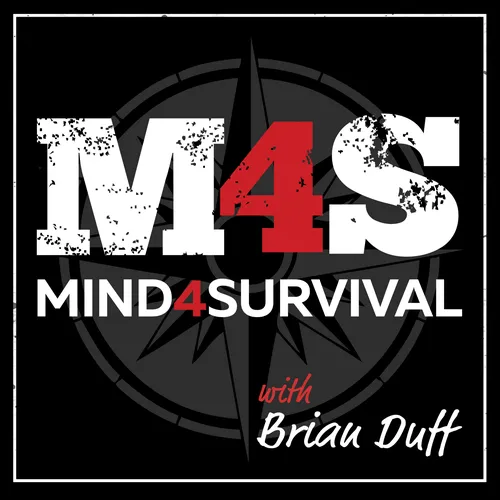US-China Trade War: 10 Smart Steps to Prepare
- Author
- [email protected] (Brian Duff)
- Published
- Sun 13 Apr 2025
- Episode Link
- https://mind4survival.com/us-china-trade-war/
The shelves might look full today—but what happens when the US-China trade war kicks in and they don't? What happens when that tool, med, or food item you count on suddenly spikes in price—or disappears entirely?
That's not a preparedness doomsday fantasy. It's the growing possibility of the U.S.–China trade war. With tariffs now heading north of 125%, all eyes are on the global supply chains to see if they begin to wobble. And like we saw during COVID, it doesn't take much to begin limiting access to everyday essentials.
This article isn't about politics—it's about preparedness. It's about giving you the clarity to step back, assess what matters most, and make smart moves. I will break down how we got here and what's at risk and then walk you through 10 smart, practical steps—based on the Survival Pyramid—that you can take right now to get ahead of the squeeze.
If you want to be the one who's calm, capable, and ready—not the one scrambling—this is where you start. Let's walk through it together.
The Trade War Timeline: How Did the Trade War Start
To understand where this could lead, let's quickly look at what's already happened. China has had tariffs against US goods in place for decades. So, in alignment with President Trump's trade policy, the US increased its tariffs on Chinese products.
Feb 1: U.S. adds 10% tariff on Chinese imports
Feb 4: China raises tariffs 10–15% on U.S. exports
Mar 3: U.S. increases tariffs to 20%
Mar 4: China follows with another 10–15%
Apr 2: U.S. imposes a 34% increase
Apr 4: China matches with 34%
Apr 8: U.S. adds another 50%
Apr 9: China raises tariffs on U.S. goods to 84%
Apr 9 (later): U.S. spikes tariffs to 125%
Apr 11: China matches again at 125%
This is no longer a back-and-forth. It's a freight train, and with President Trump raising tariffs on Chinese goods to 145%, that train is already rolling.
Why the US-China Trade War Matters to You
During COVID, we learned just how dependent we are on imports—especially from China. Over 70% of the active ingredients in U.S. pharmaceuticals come from overseas. We also import many medical devices, electronics, car parts, tools, and food items.
This trade war means:
Medicine shortages (again)
Higher food prices
Delayed shipments for essential items
Out-of-stock alerts on everyday products
Even if disruptions only last a few weeks, the ripple effect can take months to sort out. And that lag is where things get tough—unless you're already ahead of the curve.
10 Smart Steps How to Prepare for the US-China Trade War
Using the Survival Pyramid as a guide, here's how to start shoring up your preparedness before prices spike or supplies tighten:
1. Mindset: Stop Assuming Normal Is Permanent
Normalcy bias is dangerous. Just because we've always had access to cheap goods doesn't mean we always will. Shift your mindset from "normal" to "margin." Think about what you'll wish you had more of if things get tight—and act on it now.
2. Situational Awareness: Pay Attention to Early Indicators
Empty shelves, purchasing limits, or rising prices on key items are signs. Don't wait for an official announcement to start preparing.
3. Safety & Security: Reinforce Your Home
Hard times bring out the best—and worst—in people. Make your home a hard target. Reinforce doors, upgrade locks, consider camera systems, and stay low-profile with your preps.
4. Medical: Get Ahead on Prescriptions and Supplies
If you rely on daily meds, now is the time to stock up. Look into services like JASE Medical for emergency antibiotics. Don't wait for a shortage to find out what you need.
5. Shelter: Secure Your Living Situation
